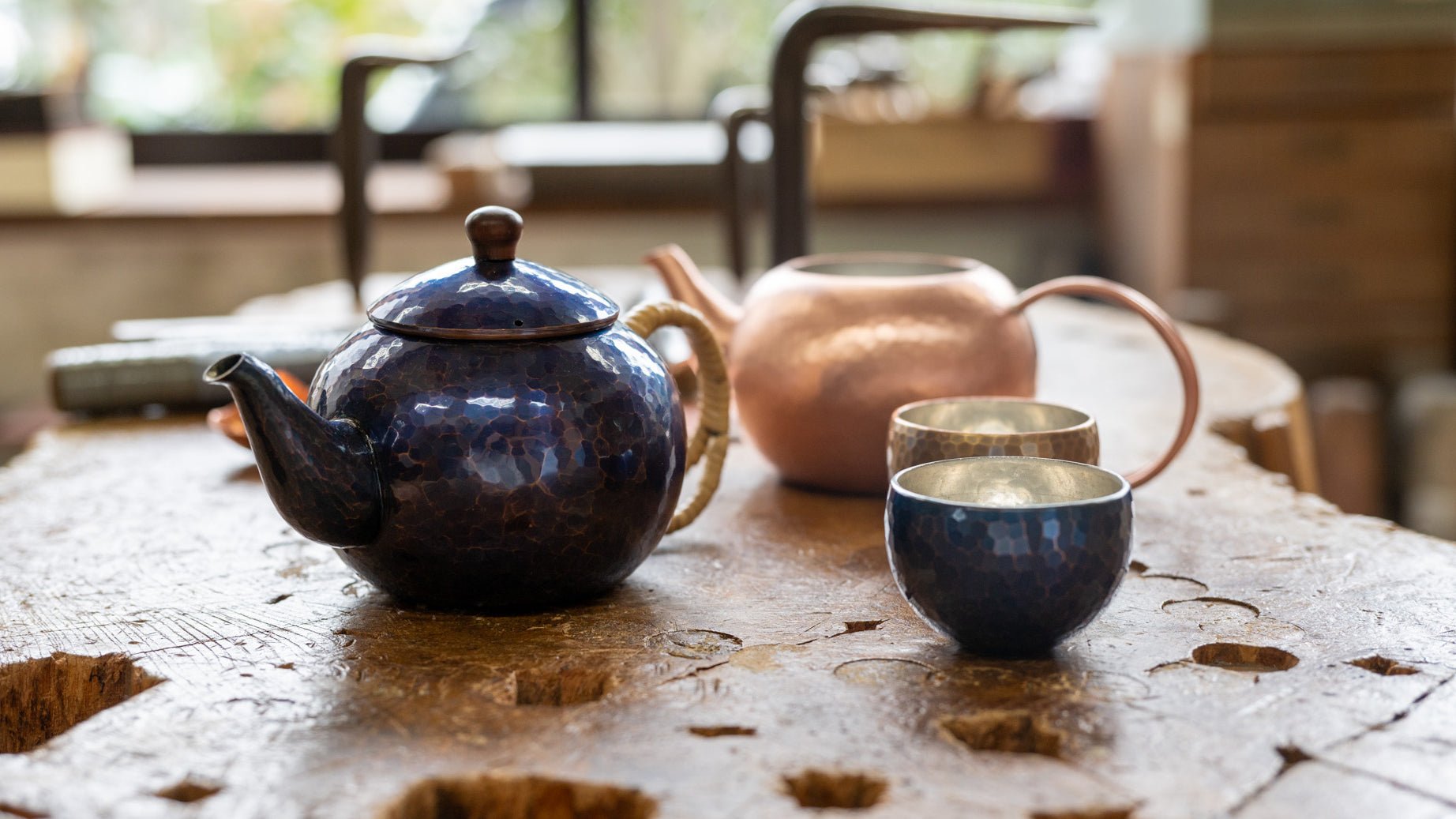
Seigado—The Radiant Beauty of Copper
Written by Team MUSUBI
Nestled in Yahiko Village, Niigata Prefecture, the heartland of hammered copperware, Seigado crafts stunning metalworks using traditional patination techniques passed down through generations. Their products, which include sake ware, tea ware and vases, are known for their stunning hues that one would never expect from copper. Recently, Team Musubi had the pleasure of visiting their workshop to witness their intricate production process. This blog post delves into the making of their exceptional metalwork pieces and explores the unique allure of Seigado.

tables of contents
Inside the Workshop
Seigado’s workshop is situated at the foot of Mt. Yahiko, a region with a rich history of copper mining since the Edo period (1603 CE–1868 CE). Upon our arrival, we were greeted by the serene atmosphere and rustic charm of the studio in its 30-year-old building. We were warmly welcomed by brothers, Nishikata Ryota and Hiroshi, along with their mother, all of whom greeted us with warm smiles.

We were promptly shown around the studio.
The first floor, designed as a space to welcome guests, was separated from the main working area. During our visit, we were able to observe the production process of chirori sake carafes and teapots all available at our online store.
The manufacturing process consisted of three main steps.
Step 1: Shaping
The manufacturing process starts with hammering a single sheet of copper using a technique called shibori. This step involves shaping a flat metal sheet into a vessel using a hammer and an anvil.
One of the metalworking techniques used is called mimikuchi uchidashi, developed by craftsman Sasage Kenjiro from Tsubame City around 1920. This highly advanced method involves shaping a teapot from a single sheet of copper, including the "ear" where the handle is connected and the spout. Typically, the ear and spout are made separately and welded to the body of the teapot. However, with the shibori technique, the craftsman carefully reduces the diameter of the metal sheet while maintaining the spout and ear in place, resulting in a uniquely crafted piece.
Sake ware such as chirori sake carafes and guinomi sake cups are crafted from flat sheets of metal, which are pressed or formed into cylindrical shapes.
Each piece is hand-shaped, resulting in forms that cannot be replicated by industrial production. However, items with a narrow opening, like sake carafes, cannot be removed from molds and thus, require additional handcrafting steps.Although we were not able to actually see the shaping during our visit, we moved on to the next step to observe the hammering process.

Step 2: Hammering Patterns



As Nishikata continued to work, the sound of the hammer striking the copper sheet resonated throughout the workshop, pleasant and soothing.

After hammering the sake carafe, we also observed the production and welding of a teapot spout using a burner. A sheet of copper was placed against the torikuchi tool fixed on the agari dai, and the craftsman used various hammers and anvils to shape it. This process, which involves carefully adjusting the shape and size of the spout to fit the body, is time-consuming and requires meticulous attention.
Step 3: Coloring

Initially, the copper is dipped in a sulfide solution to coat it with an artificial patina. Next, it is polished with an abrasive powder. Each sake vessel is carefully polished with attention to its design and color, sometimes revealing the underlying copper, and polished until it shines. After polishing, following traditional methods, the piece is dipped in a special solution, which further enhances the color.

There are several options, ranging from the natural color of the material to traditional patination techniques. For example, silver can be finished to a glossy shine or a matte finish, blackened through sulfide treatment, or colored to a light gray using a special solution. Copper, on the other hand, can be patinated to shades of reddish-brown, golden yellow, or a rich bronze, with the interior often coated with tin.

Seigado's tin products primarily consist of sake ware. Despite their appearance, these vessels have a soft texture that fits comfortably in the hand. Tin’s purifying properties enhance the clear flavor of sake, making it a delight for those who appreciate fine alcohol.
The Evolution of Seigado


The Colorful Beauty of Copper

Witnessing the transformation of a simple metal sheet into Seigado’s finely crafted vessels and everyday utensils, through meticulous hammering and coloring, was both captivating and magical.

Seigado’s products are cherished not only for their practical benefits—such as water purification and heat conductivity—but also for their radiant traditional colors. These qualities make them perfect as gifts. Their handcrafted charm, coupled with a modern aesthetic, seamlessly integrates into daily life, adding elegance to any table setting.







Leave a comment
This site is protected by hCaptcha and the hCaptcha Privacy Policy and Terms of Service apply.